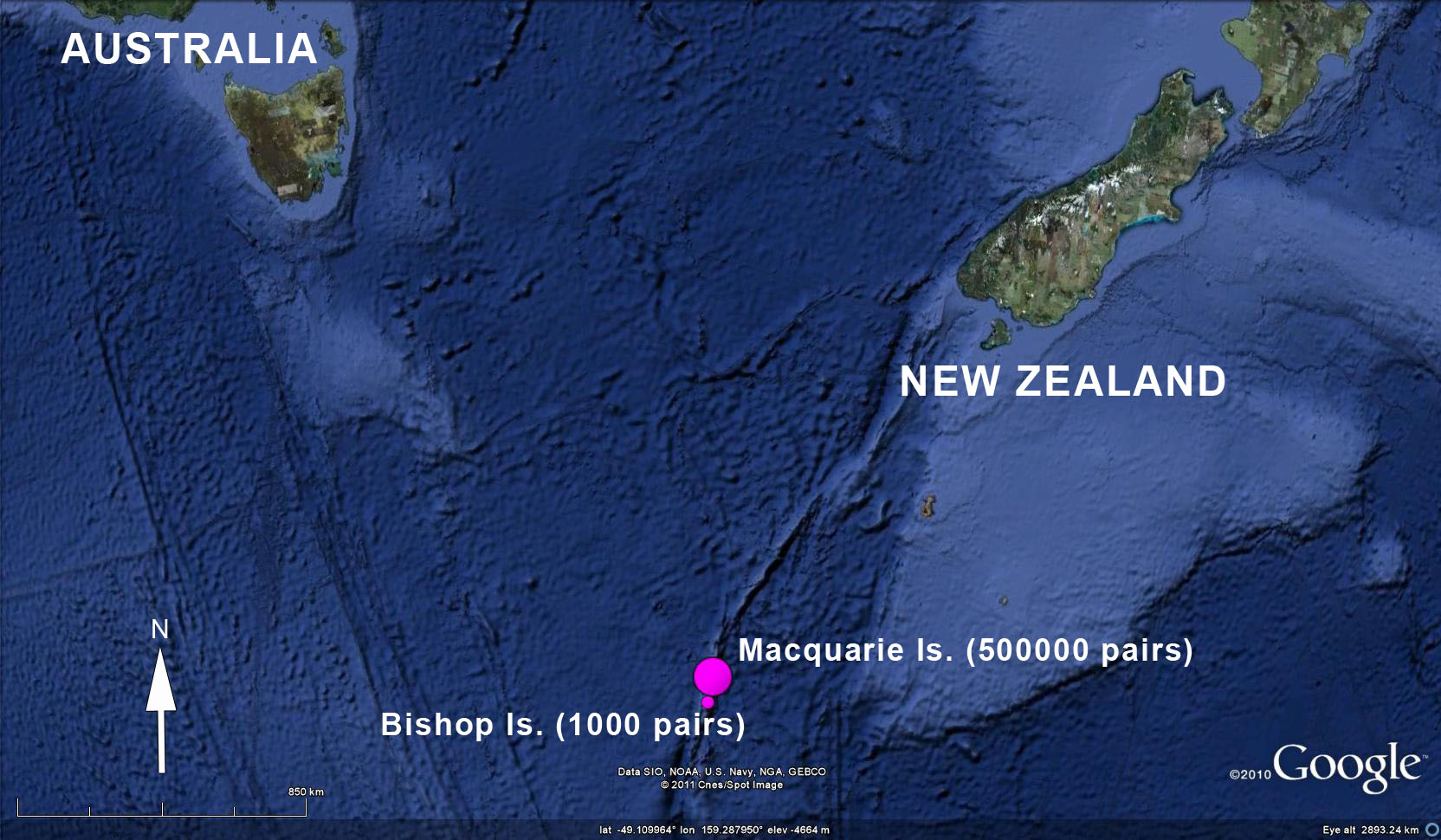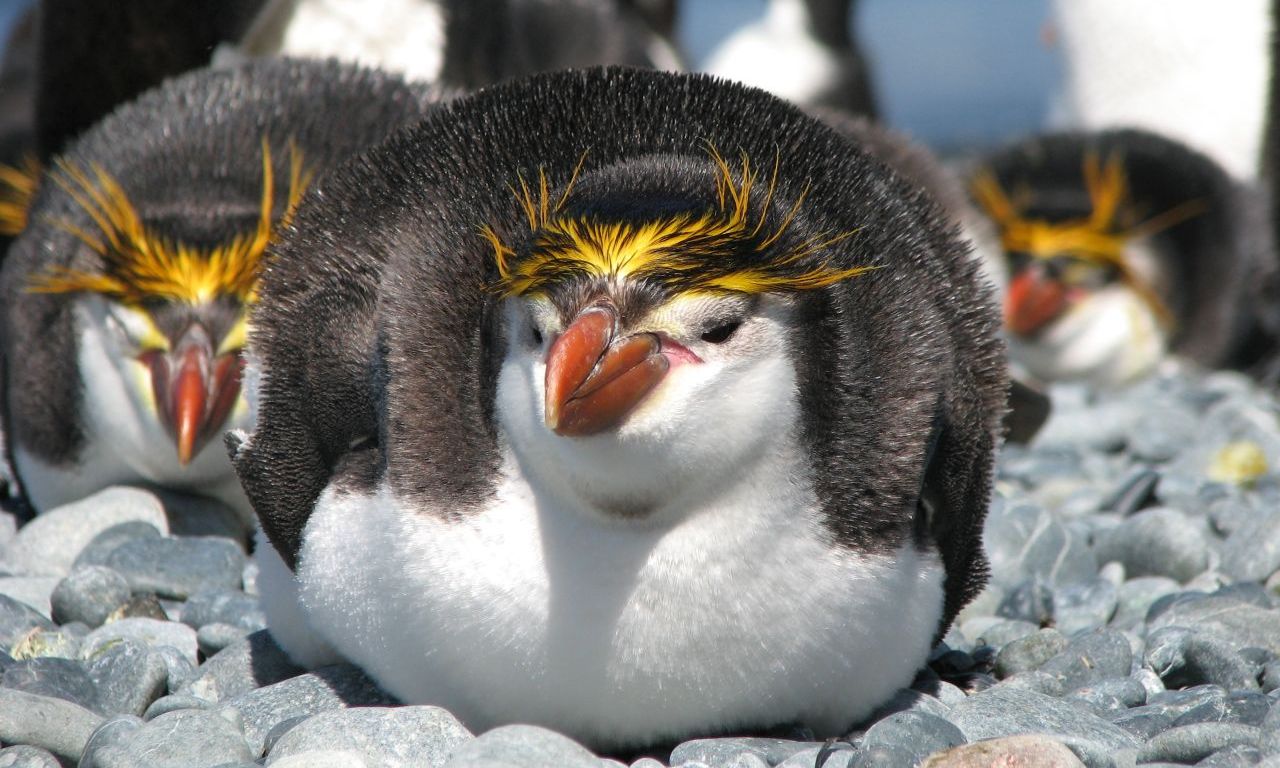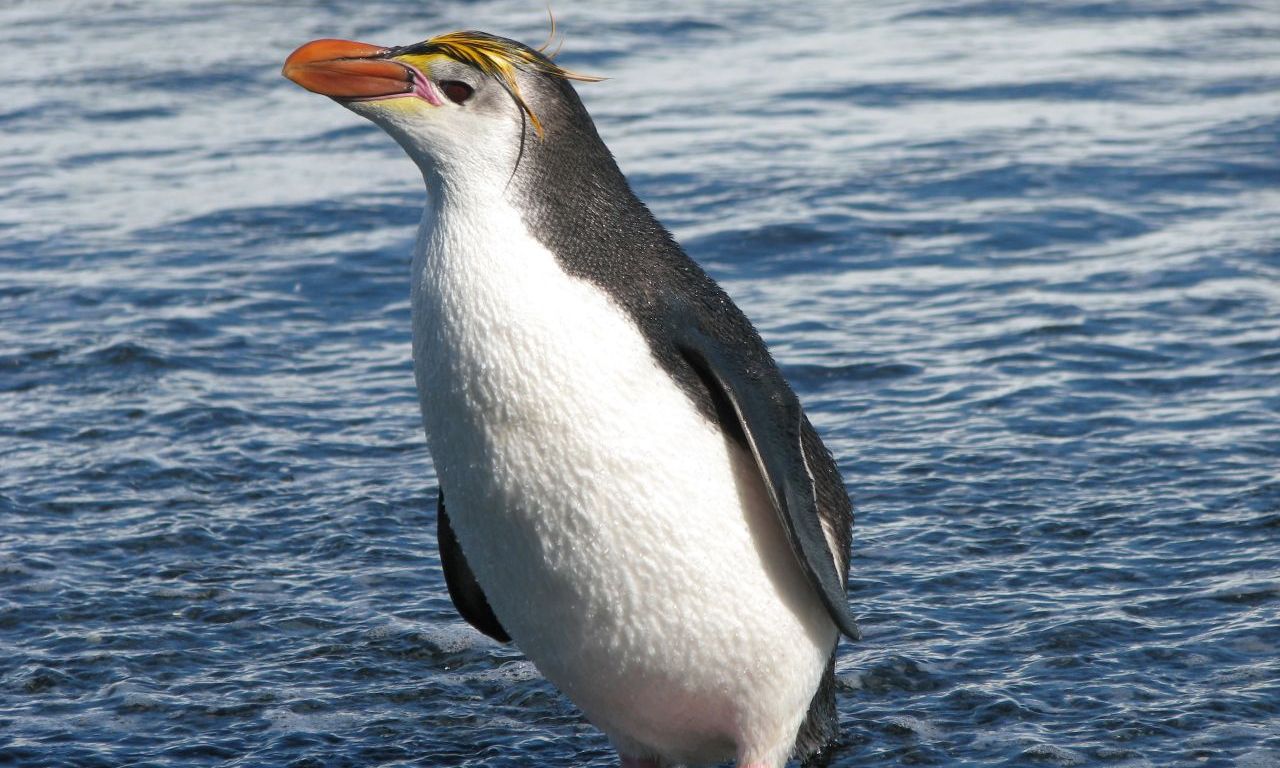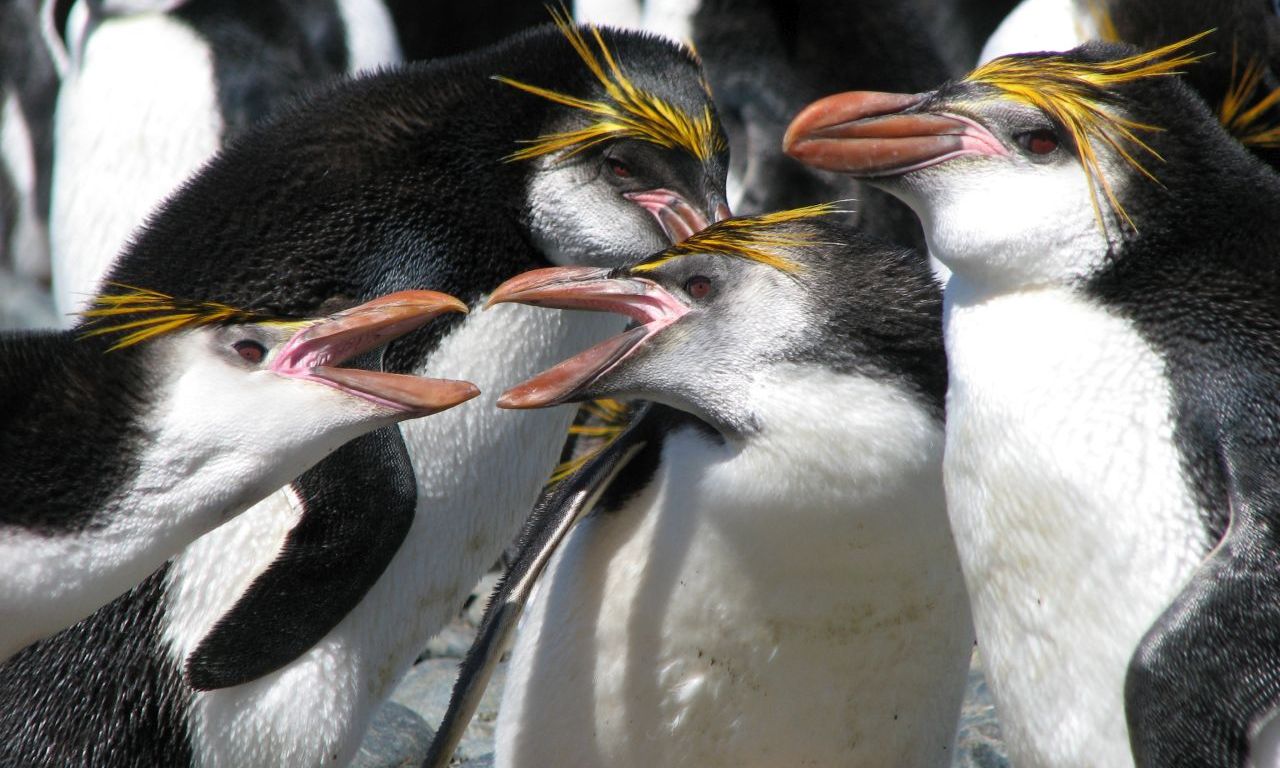Royal penguin - Eudyptes schlegeli
- DESCRIPTION
- Adults have black bodies and tails and white underparts. Conspicuous golden-yellow and orange crest feathers The bill is stout and varies in color from red to orange to brown, the eyes are dark red, and there is a patch of bare pink skin from the base of the bill to the eye. Legs and feet are pink. Sexes are similar but males are larger than females in all respects by 15-20%.
- DISTRIBUTION
-
Royal penguins are restricted in their breeding distribution to Macquarie Island
and its adjacent Clerk and Bishop islets. Non-breeding distributions are not
well known, but they are dispersive and highly pelagic, unseen on land during
the 6-month overwinter (April-October).

- HABITAT
- Colonies for Royal penguins are generally found on steep, rocky scree slopes or on more level open areas with little vegetation. Royal penguins sometimes nest in vegetated and un-vegetated sandy areas.
- BREEDING BIOLOGY
- This species exhibits an unusual reproductive strategy characterized by reversed hatching asynchrony and obligate brood reduction with two eggs laid but only one chick fledged.
- FEEDING
- Royal penguins rely heavily on myctophid fishes (59%) than on euphausiid crustaceans (37%).
- REPRODUCTIVE POPULATION
- 500,000 pairs.
- Conservation status (IUCN) and threats
- "Near threatened" (IUCN Red List 2018), due to their restricted breeding range, degradations of breeding habitat, and its comparatively low and variable population numbers.
- SOURCE
- Crossin, G. T., Trathan, P. N. and Crawford R. J. M. 2013. Pingüino Macaroni (Eudyptes chrysolophus) y Pingüino Real (Eudyptes schlegeli). In: PENGUINS: NATURAL HISTORY AND CONSERVATION (García Borboroglu, P.G. and Boersma, P.D. eds.). University of Washington Press, Seattle, USA. 328 pp.


